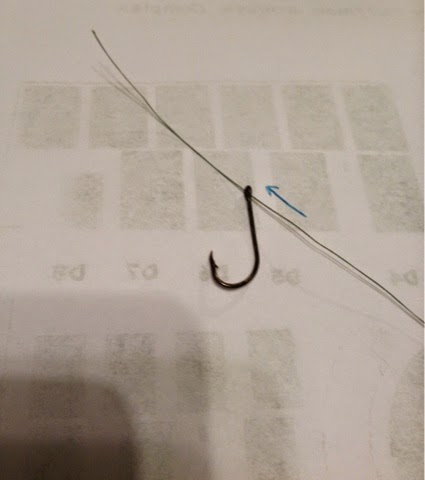By now, you know my fishing philosophy. Keep it fun, and keep it simple. All you really need on any given trip is a hook and some bait.
That said, as you fish more, you'll probably hone in on certain fish species that you like to catch more than most. Here in the U.S., bass are king, followed by catfish as a close second.
In Britain and Europe, carp seem to be king. Here in Texas, because of their abundance, size, and fight, I find myself more and more on the carp bandwagon.
When you zero in on a particular fish species, you have a couple of options. Keep doing what you've been doing. That's one option. Another is to dedicate a pole to that particular fish. Then you can customize the rigging on that pole for carp, bass, catfish, or whatever it might be.
As you may have guessed, I've dedicated a poll to carp. I've taught myself the hair rig, which I highly recommend for carping. But, in my opinion, all of that does you no good without the right hook.
There are hooks specifically designed for carp, and they look much different than the typical baitholder or even plain shank hooks available most places. Take a look below.
On the left is a size 4 baitholder. On the right is a size 4 carp hook. The carp hook has no barbs except for the one on the tip. That one barb on the tip is all you need, if barbed hooks are legal in your area.
Another difference is the shaft of the hook. You can see that the shaft of the carp hook is much shorter. This, along with the lighter weight of the carp hook, makes it easier for the fish to inhale.
Last but not least, the carp hook has a rounder shape on the business end, with the point slightly inverted toward the shaft. This means that the carp doesn't immediately feel the hook tip, which increases the chances that the fish will keep inhaling far enough to get hooked.
I realize that these hooks are not readily available in all stores here in the States. Just order online. You can get a container with hundreds of carp hooks in various sizes for relatively cheap.
They will help you land one of these.
I thought a size 4 hook would be good for the purposes of this post. It gives you a clear view. However, the smaller the hook, the better your chances, even with the big carp. I'd recommend starting with a size 6.
Tight lines!














































